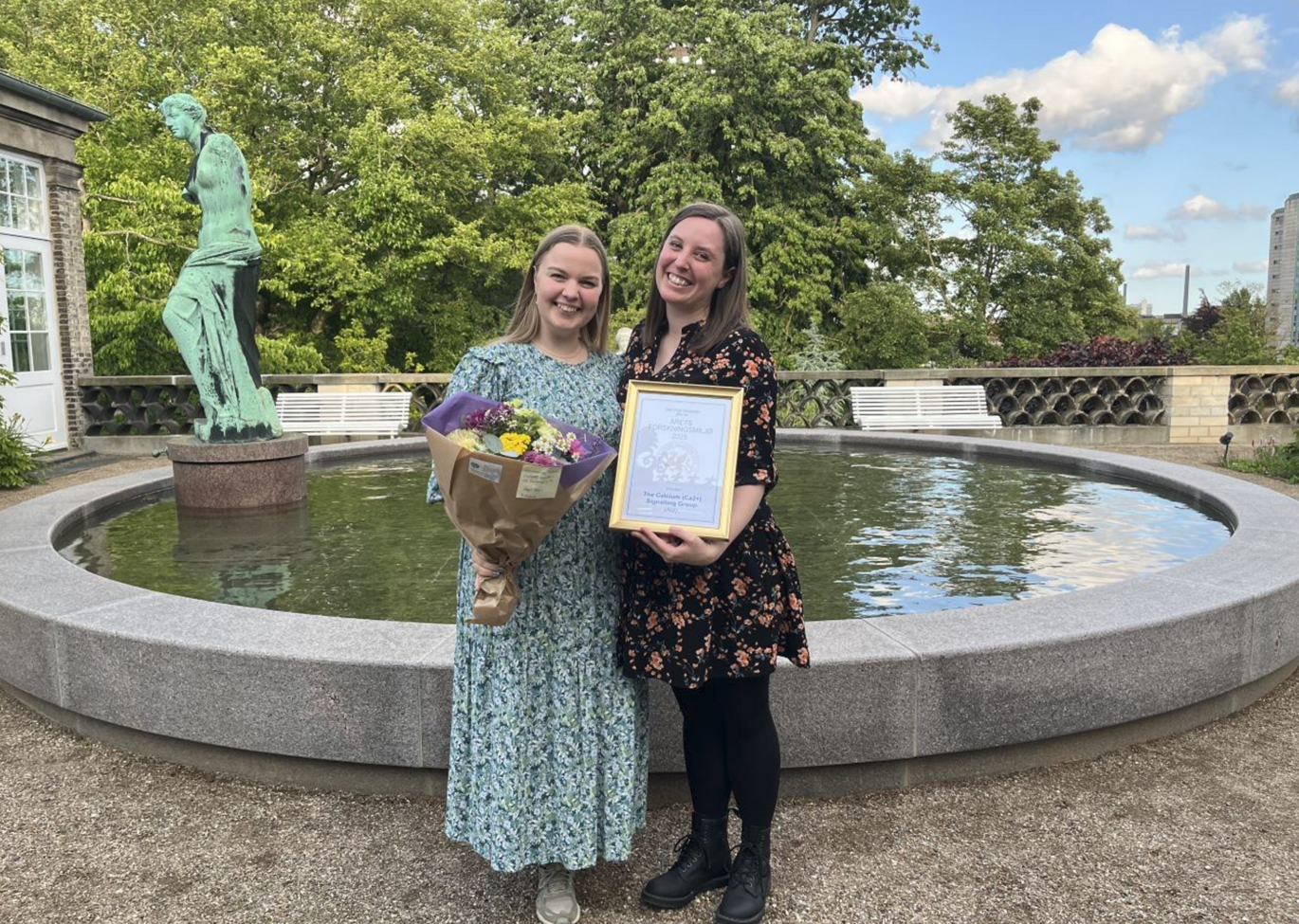Research group in biomedicine receives award for Research Environment of the Year
The Davis Lab at the Department of Biomedicine has received the Young Academy's Research Environment of the Year award. The research group focuses on creating an inclusive, welcoming and cohesive group, two of the researchers explain.

The next time The Davis Lab research group from the Department of Biomedicine at Aarhus University goes on a field trip or organises an event, there will be extra money to spend. The young research group has just received the Young Academy's Research Environment of the Year 2025 award and DKK 10,000.
Two of the group's researchers, PhD student Laura Bruus Bjerre and postdoc Silke Chalmers, heard about the award at the AU workshop "Fostering an inclusive culture at Aarhus University" and decided to nominate the group. Established in 2022, the award gives junior researchers the opportunity to nominate their own research environment. This is the first time the award has been given to a group at AU.
"We were interested because the award has a different approach. It's more about the research environment as a whole and less about individual performance," Laura Bruus Bjerre says.
Collaboration and autonomy
The Davis Lab – also known as The Calcium (Ca2+) Signalling Group – researches calcium signaling in biological systems. It consists of nine researchers, a museum coordinator and an administrative assistant and is a relatively new group at AU with a young research leader and early career researchers.
"In our application, we emphasised how we try to create a community where everyone's voice is valuable and heard. We aim for collaboration and friendliness over internal competition. This approach was particularly useful when our research manager Felicity Davis, who is amazing, went on maternity leave last year. Because we were so used to supporting each other's projects, it meant that we could continue with our lab meetings and collaborate with each other to continue our projects," Silke Chalmers says.
Laura Bruus Bjerre elaborates that it was a learning experience which became successful because the group had already established a foundation of trust and collaboration before briefly being without a research director.
The group also has a document outlining its values, which they say helps foster team spirit.
"We have a lab ethos document – a value document – which describes our expectations, not only about workload but also about how our research environment works. Everyone is encouraged to read it before joining the team so that everyone has the same expectations of the environment and the team. Before new members accept a job offer, they are invited to an interview with the rest of the group without the research director, where we encourage them to ask any nitty-gritty questions they might have. That way they get a good picture of our environment in advance," Silke Chalmers says.
The group is constantly trying to evolve and re-evaluate the dynamics when new researchers come on board, the two researchers say.
It's not a given that all research environments are equally inclusive, they explain.
"It varies. "At the university level, things are often not formally documented, so the responsibility for implementing structure lies with those leading the research environment. It is then up to the group to embrace it," Silke Chalmers says, with Laura Bruus Bjerre adding:
"When I talk to friends and colleagues about it, they are always pleasantly surprised by the way we do it. Job interviews can often seem like a one-way assessment, but we try to turn it around and give candidates an insight into our dynamics. I think it has helped us create a work environment with room for diversity in group dynamics," Laura Bruus Bjerre says.
Shared identity
According to the Young Academy, which is part of the Royal Danish Academy of Sciences and Letters, a good research environment focuses, among other things, on "a common identity and mission and a clearly formulated set of values," "ensuring diversity among researchers and research methods," and "celebrating successes together and taking ownership of and learning from mistakes and failures together."
“We think this award is a really great idea, and we hope more people will become aware of it,” Silke Chalmers says:
“We were very inspired when we read about last year’s recipients, and we hope our initiatives and ideas will inspire other research environments,” she says.
They are considering using the 10,000 kroner to fund a field trip to visit another research environment, organise a lecture or panel discussion focused on diversity and inclusion, or hold a social event for the group in connection with the hiring of new researchers.
This text is machine translated and post-edited by Cecillia Jensen

